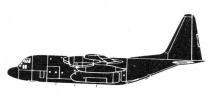Incident Overview

Description
The pilot made a manual visual approach, activated the autobrake system and disconnected the auto throttle, passing the threshold with 19 kt excess speed. When the main wheels touched down 800 m into the runway, the autobrakes disengaged without the brake pedals/spoiler handle having been touched. During roll-out the aircraft was swerving with little retardation and, with 600 m runway remaining, a left turn towards the high speed turn-off taxiway was initiated. When abreast of the far end of the runway the nose-wheel left the concrete taxiway and dug into the ground. The aircraft stopped within 80 m with the left main gear still on the taxiway. The reverse mechanism on both engines had been deactivated four days earlier due to a requirement stemming from an emergency Airworthiness Directive. This AD was issued following the fatal accident of a Lauda Air Boeing 767 in May 1991 that occurred following the in-flight deployment of a thrust reverser. Causes of the accident: – The landing took place at too high a speed and far into the runway. – The reversers were off. – Auto braking disengaged during the setting. – Erratic directional control after touchdown. – The captain couldn’t stop the aircraft on the runway. – The nose wheels buried themselves in the ground beside the track.
Primary Cause
Inadequate braking system control and a failure to properly engage the autobrakes during a critical landing phase.Inadequate braking system control and a failure to properly engage the autobrakes during a critical landing phase.Share on:





